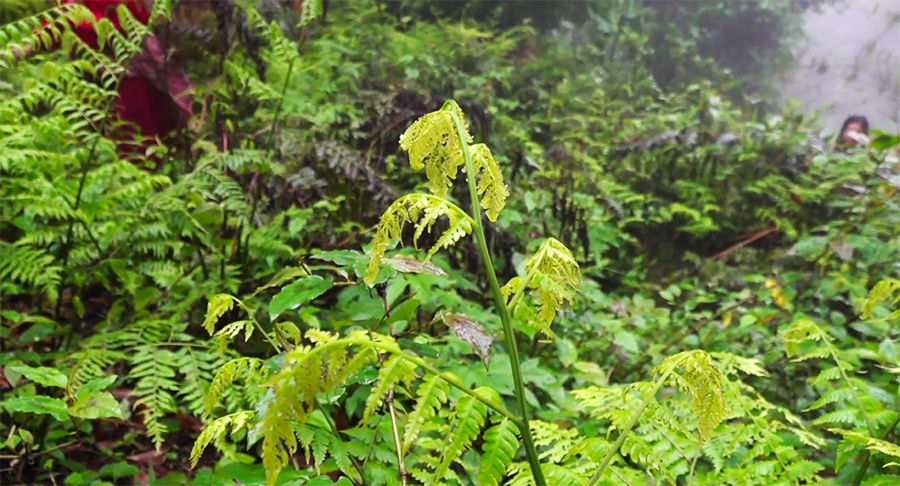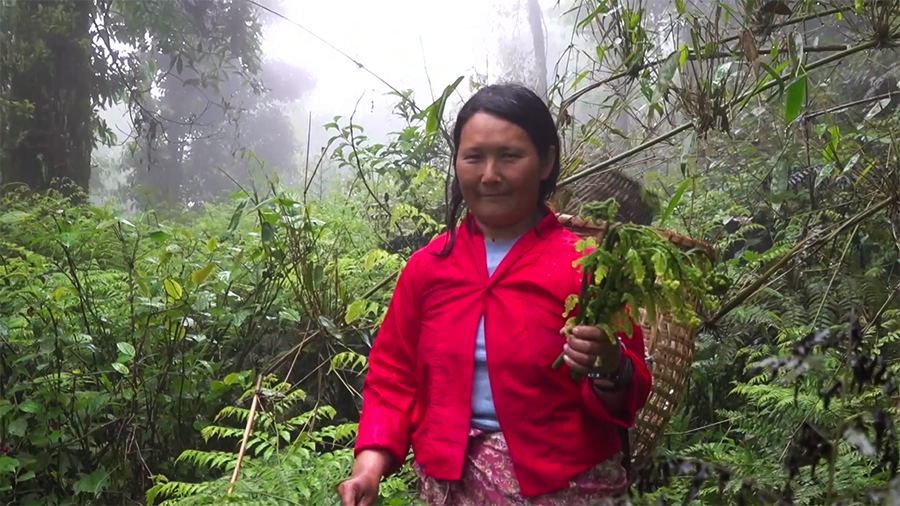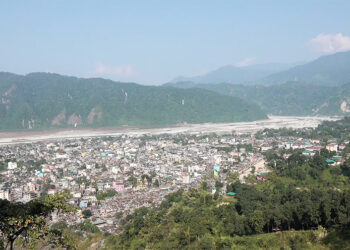 Wild vegetables have become a lucrative source of income for the residents of Wogyal Chiwog in Wangdue Phodrang’s Daga Gewog. They collect wild vegetables from the nearby forests and sell them in Bajo town almost twice a week. The collection of wild vegetables has been a traditional practice in the chiwog passed down through generations. The income helps the community sustain its livelihoods.
Wild vegetables have become a lucrative source of income for the residents of Wogyal Chiwog in Wangdue Phodrang’s Daga Gewog. They collect wild vegetables from the nearby forests and sell them in Bajo town almost twice a week. The collection of wild vegetables has been a traditional practice in the chiwog passed down through generations. The income helps the community sustain its livelihoods.
 45-year-old Pem Zam heads out into the forest to collect wild vegetables.
45-year-old Pem Zam heads out into the forest to collect wild vegetables.
After walking almost an hour through dense forest, Pem Zam and her neighbours finally reach a place where wild vegetables are grown.
 Their focus is clear, return home only after collecting a pack basketful of fern, whether it rains or shines.
Their focus is clear, return home only after collecting a pack basketful of fern, whether it rains or shines.
Likewise, men are equally busy in a thick forest under heavy downpour looking for Plectocomia himalayana, locally known as Patsha and other vegetable items.
Locals say it’s not easy until they have thoroughly combed dense forests to get enough to return home with.
But they say it is worth the struggle as these vegetables fetch a good price in the market.
Locals also collect Elatostema plant, locally known as Damburu and mushrooms from the forest.
“I can earn up to Nu 15,000 per week by selling wild vegetables. These wild vegetables are an additional source of income for us. Although the price is good initially, it drops as more products enter the market,” said Pem Zam, a resident of Wogyal Chiwog, Daga Gewog.
“As a woman, it is risky to frequent dense forests. There is a chance of encountering wild bears. Moreover, we never know what kind of situation we might face, especially as women. So, we do have these concerns. I take the wild vegetables to the market once a week and earn around Nu 15,000,” said Rinzin Lham, another resident of Wogyal Chiwog.
Locals here are equally passionate about collecting and selling wild vegetables as they are about growing and marketing their agricultural produce.
“This is one of the main sources of income for the people living in the village. Without this income, we would not be able to support our families. Mushrooms, in particular, fetch a good price during the mushroom season. We can earn at least Nu 50,000 to 60,000 within two months. Ferns also fetch a good price, though they usually do not bring in more than Nu 20,000,” said Pem Tshering, a resident of Wogyal Chiwog.
Wogyal Tshogpa Dorji said, “Even if we estimate around Nu 10,000 per week, an individual would earn approximately Nu 350,000 in a year just by selling wild vegetables. Patsha plants can regrow if they are not cut from the ground while harvesting.”
Daga Gup Kinga said, “It is not easy. They have to collect wild vegetables from inaccessible and often risky forests, climbing cliffs. Sometimes, they even have to climb tall trees. We are concerned about their safety. Therefore, the gewog administration is reminding people through the chiwog Tshogpa to be vigilant while collecting these plants.”
Sources say the collection of Patsha for commercial purposes is restricted unless locals form a Non-Wood Forest Products Management Group as per the Forest and Nature Conservation Act of Bhutan 2023 and Forest and Nature Conservation Rules and Regulations 2023, or without approval from the concerned authority.
While such wild vegetables are a good source of income, the locals are worried about sustainability as availability gradually declines due to an increasing number of collectors over the years.
According to the locals, there used to be plenty of wild vegetables in these areas. However, due to development, a growing population, an increasing number of collectors, and easier road access for transportation, the quantity of these products appears to have slightly declined.
Changa Dorji, Wangdue Phodrang
Edited by Phub Gyem








